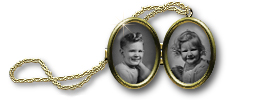|
| |

|
 |
|
 1611 - Yes, date unknown 1611 - Yes, date unknown
Generation: 1
| 1. | Henry Ivins was born in Jan 1611 in Jamestown, Virginia, British Colonial America; and died. Notes:
...England in the early 1600's was a land of dispirit and under a monarch. It gave subjects little chance to change their position in life. so the migration to a plantation, set up by boards of business men supplying money for ships and supplies, was the answer to a better life. It was a hard life in the colonies, trying to meet the demands from England and just surviving in the wilderness from day to day.
...In 1610 the ships, "Patience" and Deliverance" arrived in Jamestown. Spring was in the air, certainly the planting season was soon to start. The arrival of new adventurers and suppliers was always cause for celebration and thanksgiving. Unconfirmed family stories say that Henry Ivins was part of this group that arrived in Jamestown that day. We do have proof that he was in the colonies in the early 1600's thanks to "The Journal of Thomas Gates". We also know that Henry worked for the Dutch company, Gabrey & Sons of Amsterdam as a fur trader from 1633-1639, and that he owned land in Salem County, New Jersey in 1687 as mentioned in Shrouds "History and Genealogy of Fenwick's Colony". It is evident that he was in the area and probably began a family line that exists through the country today.
...At the age of 19 Henry went up the James River to Chesapeake in the Delaware River to Raccoon Creek. Here he spent three days building a wigwam. Henry then set up trading post with the Indians. Some of the items he bartered were guns, beads, blankets, and cloth. In return he received skins of mink, beaver and other animals. He spent two years trading with the Metacoms tribe. During this period Henry carved out a canoe and assembled rafts to carry his furs to buyers. He floated down the Delaware River to the Hudson, then on to New Amsterdam. The demand for furs was great, and he sold them all to the commercial firm of Gabrey and sons of Amsterdam. The Dutch company hired him to continue his fur trade with the Indians from 1633-1639.
...Henry also traded in tobacco which mean periodic trips to Jamestown plantations. In 1645 Henry went back to Penn's Neck, a Swedish area, to buy land from his friends, Chief Necomis and his mother Necosshehesco. He had found a woman he wanted to marry and decided it was time to settle down and start a family. Although there is no written proof, it seems likely that their first born was Daniel, who records show owned land in Penn's Neck about the time Henry's son would have. Very unlikely any Ivins would not be related at that time. Like all colonial families all members shared the work on the farm. Typical crops were corn and wheat, and livestock were pigs, chickens and cows.
...In 1675 John Fenwich arrived with the first English settlement that could be considered lasting.
Charles II was King of England at that time, and to quiet problems with the Swedes and the Dutch (after their defeat by England) arrangement was made for quick claiming of property purchased from the Indians. This protected land owners of record at the time. It was also agreed to pay a Right of Conveyance to England so the land owners could sell or transfer title if they desired to do so. (Compiled by Adam Brockie, Maureen Brockie, Ivins Family History 1610-1920 (November 2005: Self Published), pg. 2. (November 2005), pg. 2)
Henry married about 1645 in Penns Neck, Salem, New Jersey, British Colonial America. [Group Sheet] [Family Chart]
Children:
- Daniel Ivins was born in Jan 1648 in New Sweden, Colony of Sweden; died in in Penns Neck, Salem, New Jersey, British Colonial America.
|
Generation: 2
|
|
|
|